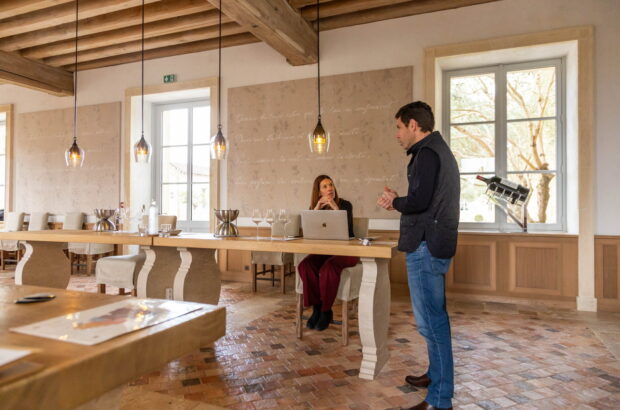An electronic dart was tossed at us recently by Decanter reader Tim Frances from Kent. It landed on the screen of our magazine editor Amy Wislocki; Amy lobbed it across the virtual room to me, suggesting a column-length reply. ‘Here’s a poser,’ Tim began. ‘How do your experts grade a wine that they find intellectually well made, but that they truly madly deeply dislike? I’ve tasted wines I can admire dispassionately, but would stab my feet with forks rather than drink them. Must be a conundrum for pros, isn’t it?’
Tim: yes. Let’s run through some dislikes first. Few are universal, though I don’t know a single fellow writer or judge who admires wines that could be called ‘oaky’. Sometimes cultural allowances are made (traditional Rioja, let’s say); sometimes experience encourages us to hope that the oak will be absorbed in time (baby grand Bordeaux). Otherwise – we’re perplexed. Not least because it’s a blemish that most producers could save money by not committing. Perhaps they think ‘drinkers like oak’. Really?
After that, we’re off into the meadows of subjectivity. I dislike high-acid red wines in general, unless that acidity reflects a long season in a marginal climate and is accompanied by fruit flavours which acidity renders juicy. But severe, thin-lipped, high-acid 12% or 12.5% wines of both colours grown in warm climates, often described by my colleagues as ‘tightly wound’ and usually picked prior to ripeness, have me reaching for one of Tim’s forks and considering which foot it might be best to stab. My colleagues, though, mean ‘tightly wound’ as a term of praise.
My dislike of raisiny (as opposed to fresh-fruited) wines is commonly shared, I think, and these are especially horrible when the same wine has been lavishly oaked and acid-adjusted. I’m also not fond of smooth, untannic reds, or those whose tannins are fine, dry and powdery (which often means adjusted or oak-derived) as opposed to textured, succulent and chewy (from grape skins). Plenty of experts, though, seem to like such wines, at least to taste – whereas plenty of experts criticise elevated alcohol levels, about which I am thoroughly agnostic. Taste the wine first, that’s all, before peering at the label.
But Tim’s antennae (I suspect) are beginning to wave at this point. I have laid out the parameters above as if they were binary – but they aren’t. They are sliding scales of nuanced hue. A ‘tightly wound’ 12.5% warm-climate Chardonnay may be the result of different picking portions rather than a single early pick; it may in reality be closer to 13.5% than 12.5%; it may come from a mature, propitiously sited vineyard and have attractively creamy lees notes from barrel fermentation. Then I’d warm somewhat; then I might tiptoe into a second glass. Ditto for a red with some raisiny fruit… if it had a generous tannic profile, little or no palpable oak, and the raisin notes were mingled with sensual bramble fruits and an appealing earthiness on the finish. It all depends.
That’s the truth: there are no rules. We have to meet every wine with a completely open mind and unblinkered palate. Writers and critics should try to be merciful, since we are tasting for all tastes. Our qualitative assessment needs to go beyond personal predilection, even though it must accurately state our perceptions. If the oak is palpable or the fruit is raisiny, say so in calm neutrality; they are both features of a wine that may separately strike us as aesthetically successful or not. In that way, the reader can understand the characteristics of a wine before making their own choices about whether to buy it. (I’m a critic of scores in general, but let me say here that this is one of their advantages: the description details what the wine is like, while the score itself is a useful shorthand for enthusiasm – or its absence.)
The ultimate test, of course, is the distinction between admiration and desire. Few wine writers or critics will buy even 5% of the wines they rate highly for their own cellars. The 95%-plus is admired, though it may well include 10% or 15% of skilfully crafted foot-stabbers. Less than 5%, though, is truly desired. But for that, you need to read between the lines.
In my glass this month
Back to Niagara, Ontario, where I was startled by the rapidly improving Gamays. Lovable local virtuoso Thomas Bachelder flourished, towards the end of a colossal tasting, his Wismer-Foxcroft, Gamay Noir 52% Whole Cluster 2020: poise, perfume and lift on the nose, then a flavour that was rich and expansive, with improbable grain and depth to it. Might Gamay in Niagara do what Malbec did in Mendoza? Too soon to say, of course – but… hmmm!













